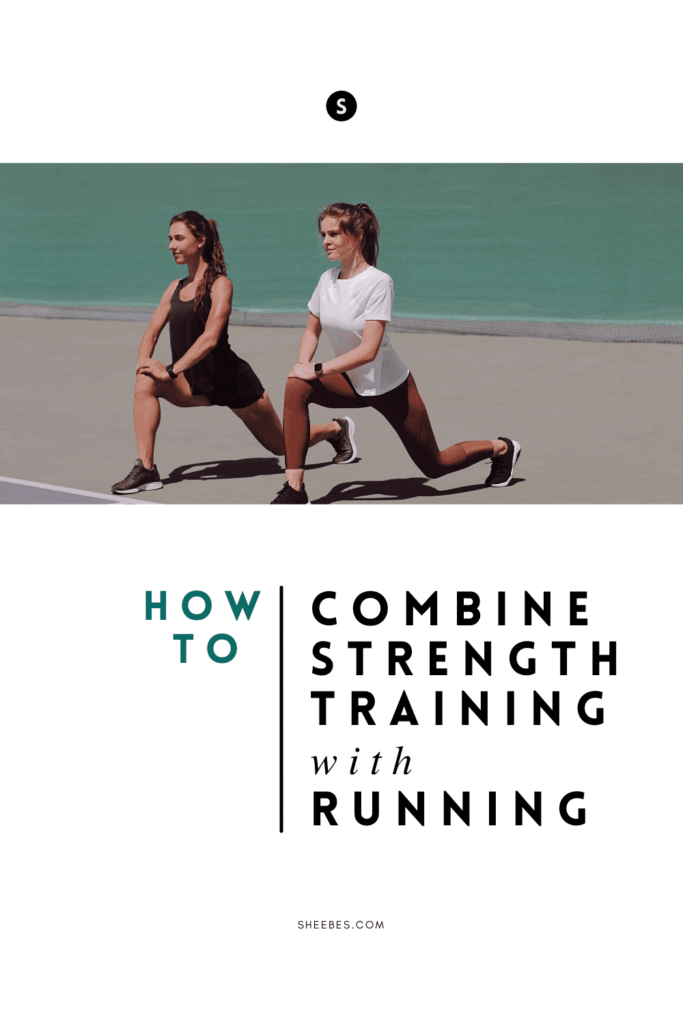You’ve probably heard by now that strength training for runners *should* be a part of your running routine.
And you have much to gain when you have a strength training for runners routine.
You’ll:
- Build your whole body strength
- Boosts your running speed
- Reduces your likelihood of a running injury
- Improves your balance
- Gives you better flexibility
But how do you combine strength training with running without leaving you too tired for your next run?
When should you do strength training? Before a run? After a run?
And how many days should you be strength training?
I had those questions too.
And honestly, my strength training has been an afterthought. It’s been something I half-heartedly did after a run or bike ride to check that strength training box.
That is until I finished reading a copy of the book I received: Finish Strong: Resistance Training for Endurance Athletes.
From combining strength work with running, when to do strength training, and more, the advice within these pages has been helpful to me, and I’m sharing a little bit of what I’ve learned here, so hopefully, it can help you too.
Let’s get started.

Whether you’re a runner looking for running tips or a cyclist searching for cycling advice, this site is here to help you elevate your fitness game.

Affiliate Disclosure: I’m here to help you grow as a rider and runner. So to keep things running smoothly and the content free, I participate in the Amazon Services program and select affiliate networks. So, when you click on those affiliate links, I earn a small commission at no extra cost to you.
About Finish Strong: Resistance Training for Endurance Athletes
Finish Strong: Resistance Training for Endurance Athletes has been written by endurance athletes who’ve completed IRONMANS, marathons, half-marathons, open water swims, cycling races, and other multisport events.
Richard (RJ) Boergers has a BS in Health Science and Athletic Training, an MS in Human Performance, and a Ph.D. in Human Movement Science.
He’s a licensed athletic trainer and an Associate Professor in the Master of Science in Athletic Training program at Seton Hall University.
Angelo Gingerelli has a BS in Exercise Science, an MS in Education, and an MBA.
He’s a certified strength and conditioning specialist and is a strength and conditioning coach at Seton Hall University.

What kind of strength training should runners do?
Here’s the short answer: Do strength/ resistance training and mobility training to be a stronger, faster, injury-resistant runner.
[DIVE DEEPER: Discover the secrets to unlocking your speed potential in this run faster guide.]
Strength Training for Runners
Running is a full-body activity, so your weight and strength training should also work your entire body.
Richard and Angelo have recommended 45-minute full-body strength workouts three times a week, moving quickly from exercise to exercise (called supersets) to pack plenty of moves into one session.
So how do these supersets work to build your whole body strength?
Typically, a strength routine would have you do a set of pushups to work your chest, take a minute or two to rest, and then do more pushups.
With supersets, you’re using opposing muscle groups—taxing one while the other recovers.
Supersets remove that minute or two rest period and replace it with a different exercise that works the opposite muscle.
Your superset strength routine would then look like this: a set of pushups to work your chest muscles, followed by pull-ups to work your back muscle while your chest muscles recover.
Though you can pencil in your 45-minute strength session, you may have other areas of your life that are far more important than strength training.
My advice? Do what you can in the time you have, take what’s useful, and leave the rest.
Mobility Training for Runners
A natural full range of motion is vital to runners—it can open up your stride and allow you to move freely and faster.
As runners, we’re using our legs to move forward and repeating this same motion over and over again.
And by doing this, we’re shortening the muscles and restricting our range of motion.
But mobility training can counteract our body’s tendency to restrict and contract.
Mobility training helps your joints move through their natural full range of motion to improve your running and avoid running injuries.
If you’ve got tight hip flexors, start with some hip rotations and band distraction hip lateral mobility work to reset your hips after running.

How do you combine running and strength training?
If you aren’t training for a race, do your strength training three to four days a week.
At this point, you can really focus your strength training on volume and intensity.
That’s because you’re not putting in long efforts and miles, so you don’t have to worry about too much fatigue and stress on your body.
If you’re building your running base or training for a race, schedule your strength training around your runs.
And finally, if you’re tapering for a race, your strength training should also taper off.

Can I do strength training after running?
I like to do my strength training work after running.
But the advice within Finish Strong suggests doing your strength training before a run, except on long run days, where you would skip a strength training session.
I’d suggest that you try some strength sessions before a run and a few after one and see which routine works for you.
Though we’ve covered a little about strength training for runners here, there’s much more where that came from.
If you want to learn more about strength training for runners, make sure you grab this book, where you will find even more tips such as:
- The top 10 exercises all runners should do
- Mobility exercises to open your stride and help you run faster
- A strength training for runners program to minimize your running injuries
[shop-page-wp id=’15456′]